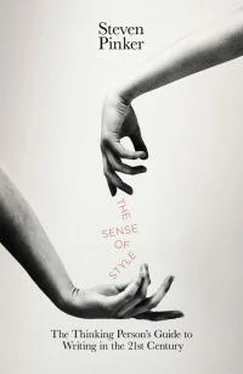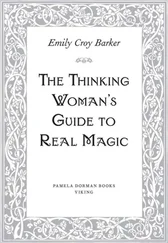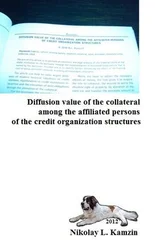We believe that the ICTS approach to delivering integrated solutions, combining effective manpower, canine services and cutting-edge technology was a key differentiator in the selection process.
They chose our company because we protect buildings with a combination of guards, dogs, and sensors.
What we see as “a quiet room” an experimenter sees as “testing conditions,” because that’s what she was thinking about when she chose the room. For a safety expert at the top of the chain of command, who lives every day with the responsibility for managing risks, the bird traps set out by her underlings are a distant memory. The public-relations hack for a security firm refers to the company’s activities in a press statement in terms of the way she thinks about them when selling them to potential clients.
Slicing away the layers of familiar abstraction and showing the reader who did what to whom is a never-ending challenge for a writer. Take the expository chore of describing a correlation between two variables (like smoking and cancer, or video-game playing and violence), which is a staple of public-health and social-science reporting. A writer who has spent a lot of time thinking about correlations will have mentally bubble-wrapped each of the two variables, and will have done the same to the possible ways in which they can be correlated. Those verbal packages are all within arm’s reach, and she will naturally turn to them when she has to share some news:
There is a significant positive correlation between measures of food intake and body mass index.
Body mass index is an increasing function of food intake.
Food intake predicts body mass index according to a monotonically increasing relation.
A reader can figure this out, but it’s hard work, like hacking through a blister pack to get at the product. If the writer de-thingifies the variables by extracting them from their noun casings, she can refer to them with the language we use for actions, comparisons, and outcomes, and everything becomes clearer:
The more you eat, the fatter you get.
The curse of knowledge, in combination with chunking and functional fixity, helps make sense of the paradox that classic style is difficult to master. What could be so hard about pretending to open your eyes and hold up your end of a conversation? The reason it’s harder than it sounds is that if you are enough of an expert in a topic to have something to say about it, you have probably come to think about it in abstract chunks and functional labels that are now second nature to you but still unfamiliar to your readers—and you are the last one to realize it.
As writers, then, we should try to get into our readers’ heads and be mindful of how easy it is to fall back on parochial jargon and private abstractions. But these efforts can take us only so far. None of us has, and few of us would want, a power of clairvoyance that would expose to us everyone else’s private thoughts.
To escape the curse of knowledge, we have to go beyond our own powers of divination. We have to close the loop, as the engineers say, and get a feedback signal from the world of readers—that is, show a draft to some people who are similar to our intended audience and find out whether they can follow it. 26This sounds banal but is in fact profound. Social psychologists have found that we are overconfident, sometimes to the point of delusion, about our ability to infer what other people think, even the people who are closest to us. 27Only when we ask those people do we discover that what’s obvious to us isn’t obvious to them. That’s why professional writers have editors. It’s also why politicians consult polls, why corporations hold focus groups, and why Internet companies use A/B testing, in which they try out two designs on a Web site (versions A and B) and collect data in real time on which gets more clicks.
Most writers cannot afford focus groups or A/B testing, but they can ask a roommate or colleague or family member to read what they wrote and comment on it. Your reviewers needn’t even be a representative sample of your intended audience. Often it’s enough that they are not you.
This does not mean you should implement every last suggestion they offer. Each commentator has a curse of knowledge of his own, together with hobbyhorses, blind spots, and axes to grind, and the writer cannot pander to all of them. Many academic articles contain bewildering non sequiturs and digressions that the authors stuck in at the insistence of an anonymous reviewer who had the power to reject it from the journal if they didn’t comply. Good prose is never written by a committee. A writer should revise in response to a comment when it comes from more than one reader or when it makes sense to the writer herself.
And that leads to another way to escape the curse of knowledge: show a draft to yourself, ideally after enough time has passed that the text is no longer familiar. If you are like me you will find yourself thinking, “What did I mean by that?” or “How does this follow?” or, all too often, “Who wrote this crap?”
I am told there are writers who can tap out a coherent essay in a single pass, at most checking for typos and touching up the punctuation before sending it off for publication. You are probably not one of them. Most writers polish draft after draft. I rework every sentence a few times before going on to the next, and revise the whole chapter two or three times before I show it to anyone. Then, with feedback in hand, I revise each chapter twice more before circling back and giving the entire book at least two complete passes of polishing. Only then does it go to the copy editor, who starts another couple of rounds of tweaking.
Too many things have to go right in a passage of writing for most mortals to get them all the first time. It’s hard enough to formulate a thought that is interesting and true. Only after laying a semblance of it on the page can a writer free up the cognitive resources needed to make the sentence grammatical, graceful, and, most important, transparent to the reader. The form in which thoughts occur to a writer is rarely the same as the form in which they can be absorbed by a reader. The advice in this and other stylebooks is not so much on how to write as on how to revise.
Much advice on writing has the tone of moral counsel, as if being a good writer will make you a better person. Unfortunately for cosmic justice, many gifted writers are scoundrels, and many inept ones are the salt of the earth. But the imperative to overcome the curse of knowledge may be the bit of writerly advice that comes closest to being sound moral advice: always try to lift yourself out of your parochial mindset and find out how other people think and feel. It may not make you a better person in all spheres of life, but it will be a source of continuing kindness to your readers.

Chapter 4
The Web, the Tree, and the String
UNDERSTANDING SYNTAX CAN HELP A WRITER AVOID UNGRAMMATICAL, CONVOLUTED, AND MISLEADING PROSE
Kids aren’t taught to diagram sentences anymore.” Together with “The Internet is ruining the language” and “People write gibberish on purpose,” this is the explanation I hear most often for the prevalence of bad writing today.
The plaint about the lost art of diagramming sentences refers to a notation that was invented by Alonzo Reed and Brainerd Kellogg in 1877 and taught in American schools until the 1960s, when it fell victim to the revolt among educators against all things formal. 1In this system, the words of a sentence are placed along a kind of subway map in which intersections of various shapes (perpendicular, slanted, branching) stand for grammatical relations such as subject-predicate and modifier-head. Here, for instance, is how you would diagram the sentence In Sophocles’ play, Oedipus married his mother:
Читать дальше













